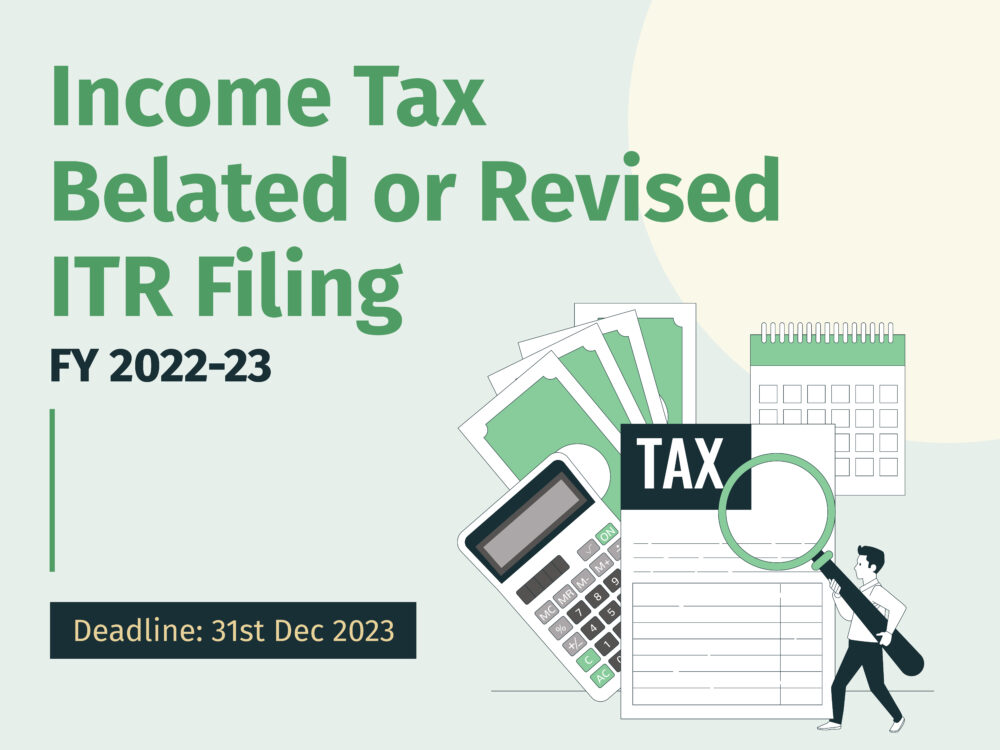As the tax season approaches, one of the most crucial decisions taxpayers face is selecting the appropriate Income Tax Return (ITR) form. The choice of ITR form can have a significant impact on the accuracy and efficiency of your tax filing process. In this comprehensive blog, we will guide you through the various ITR forms and help you determine the one that best suits your financial situation.
Understanding the ITR Forms
The Income Tax Department in India has notified several ITR forms, each designed to cater to specific taxpayer profiles and income sources. The most common ITR forms are:
- ITR-1 (Sahaj): This form is applicable for resident individuals with a total income of up to ₹50 lakh, derived from salary, one house property, and other sources (such as interest from fixed deposits) up to ₹5,000.
- ITR-2: This form is for individuals and Hindu Undivided Families (HUFs) with income from sources other than business or profession, such as salary, house property, capital gains, and other sources. It is also used by non-residents and individuals with foreign assets or income.
- ITR-3: This form is for individuals or HUFs who have income from a business or profession, in addition to other sources of income.
- ITR-4 (Sugam): This form is for individuals, HUFs, and firms (including Limited Liability Partnerships) with income from a presumptive business or profession, with a total turnover of up to ₹2 crore for the business and ₹50 lakh for the profession.
- ITR-5: This form is for partnership firms, Limited Liability Partnerships (LLPs), Association of Persons (AOPs), Body of Individuals (BOIs), and artificial juridical persons.
- ITR-6: This form is for companies other than those claiming exemption under section 11 (charitable or religious trusts).
- ITR-7: This form is for persons including companies required to furnish returns under sections 139(4A), 139(4B), 139(4C), or 139(4D) of the Income Tax Act, 1961.
Factors to Consider When Choosing the ITR Form
To determine the appropriate ITR form, you need to consider the following factors:
- Residency Status: Your residency status, whether you are a resident, non-resident, or not ordinarily resident, will determine the applicable ITR form.
- Sources of Income: The types of income you have, such as salary, house property, business/profession, capital gains, and other sources, will guide you towards the suitable ITR form.
- Total Income: Your total income for the financial year, including all sources, will help you identify the correct ITR form based on the income thresholds.
- Asset Ownership: If you own foreign assets or are a director in a company, you may need to file ITR-2 instead of ITR-1.
- Presumptive Taxation: If you are eligible for the presumptive taxation scheme under sections 44AD or 44ADA, you can consider filing ITR-4.
Step-by-Step Guide to Choosing the Right ITR Form
- Determine Your Residency Status: Assess whether you are a resident, non-resident, or not ordinarily resident based on the criteria specified in the Income Tax Act.
- Identify Your Sources of Income: Make a list of all your income sources, including salary, house property, business/profession, capital gains, and other sources.
- Calculate Your Total Income: Add up all your income sources to determine your total income for the financial year.
- Check the Eligibility Criteria: Refer to the ITR form descriptions and eligibility criteria to identify the form that best suits your financial situation.
- Consider Additional Factors: If you own foreign assets, are a director in a company, or are eligible for the presumptive taxation scheme, factor in these additional considerations when selecting the ITR form.
- Verify the Information: Carefully review your Form 16, Form 26AS, and Annual Information Statement to ensure the accuracy of the information before filing your ITR.
- File the ITR Form: Once you have determined the appropriate ITR form, proceed to file your income tax return within the specified due date.
Conclusion
Choosing the correct ITR form is a crucial step in the tax filing process. By understanding the various ITR forms and the factors to consider, you can ensure that your income tax return is filed accurately and efficiently. Remember to stay informed about the latest changes in ITR forms and requirements to avoid any potential issues or penalties. Embrace the process, seek professional guidance if needed, and take control of your financial well-being through responsible tax planning and compliance.







